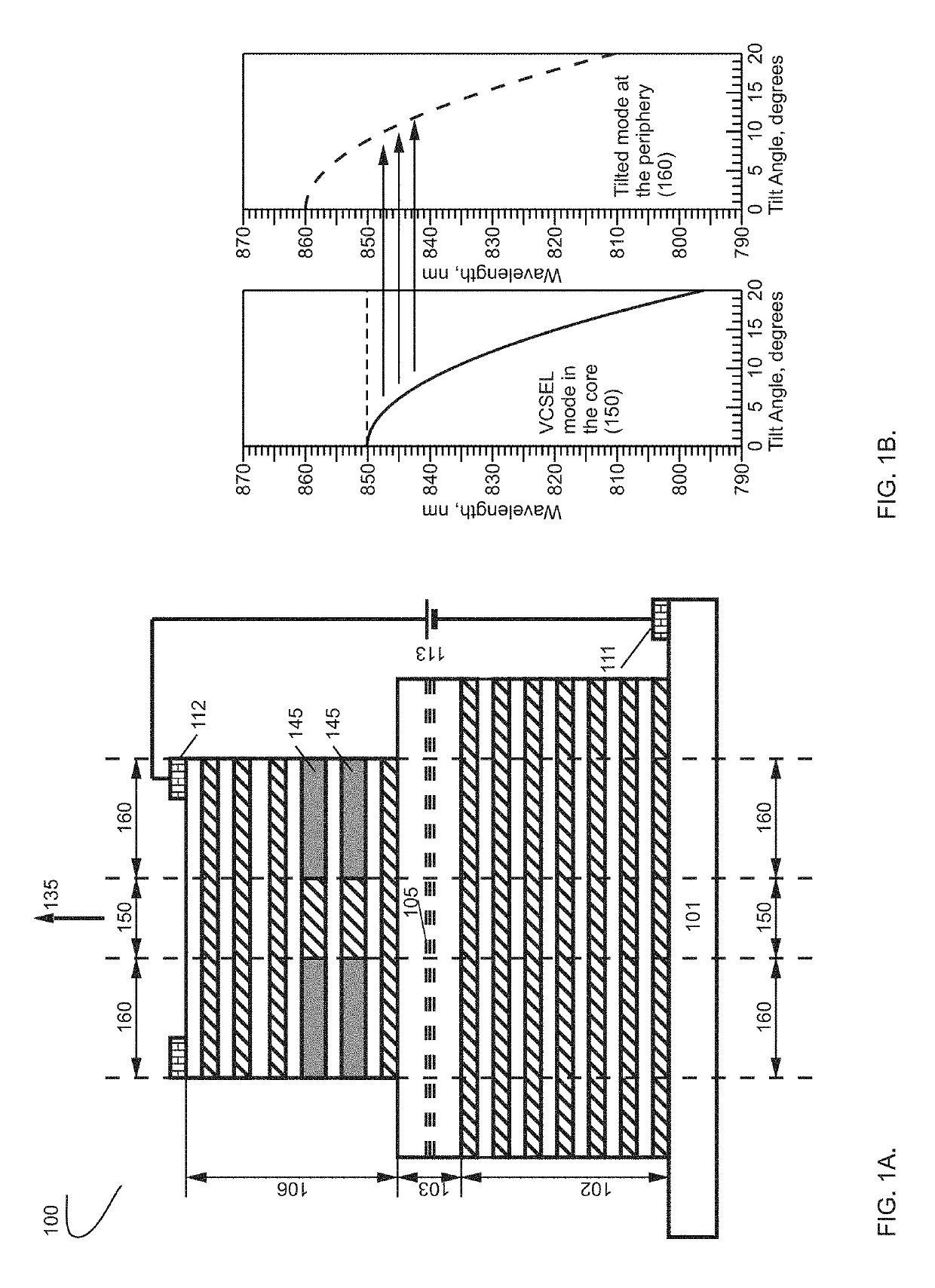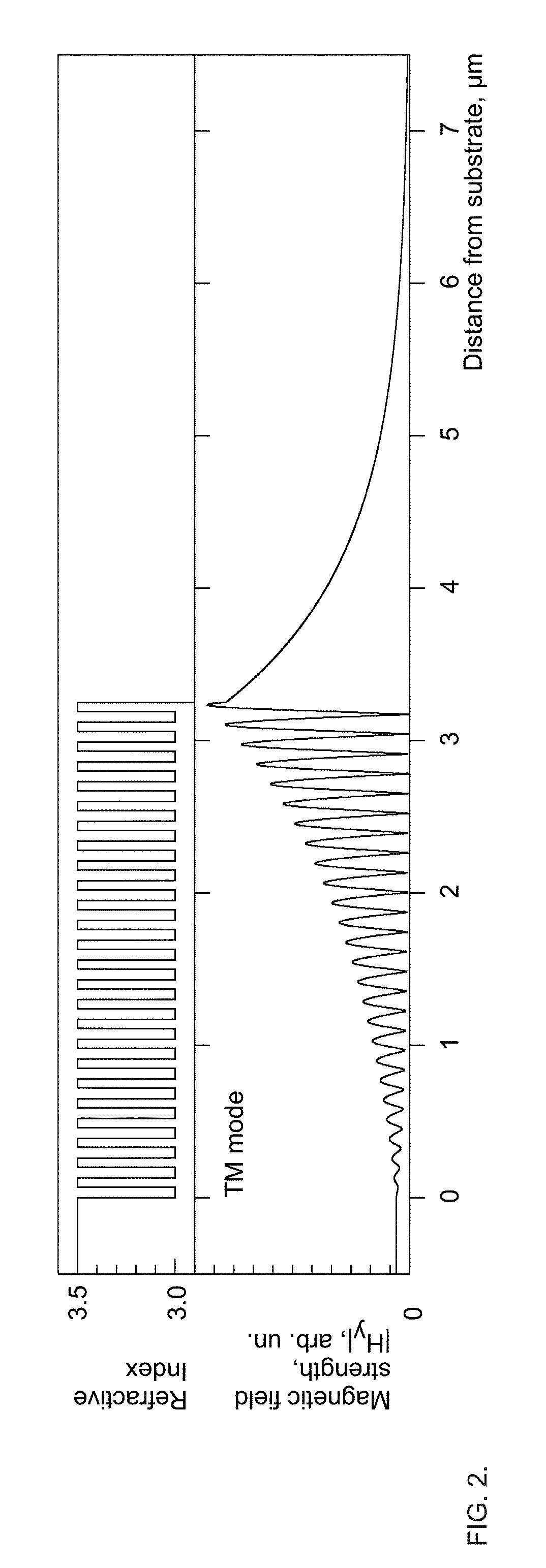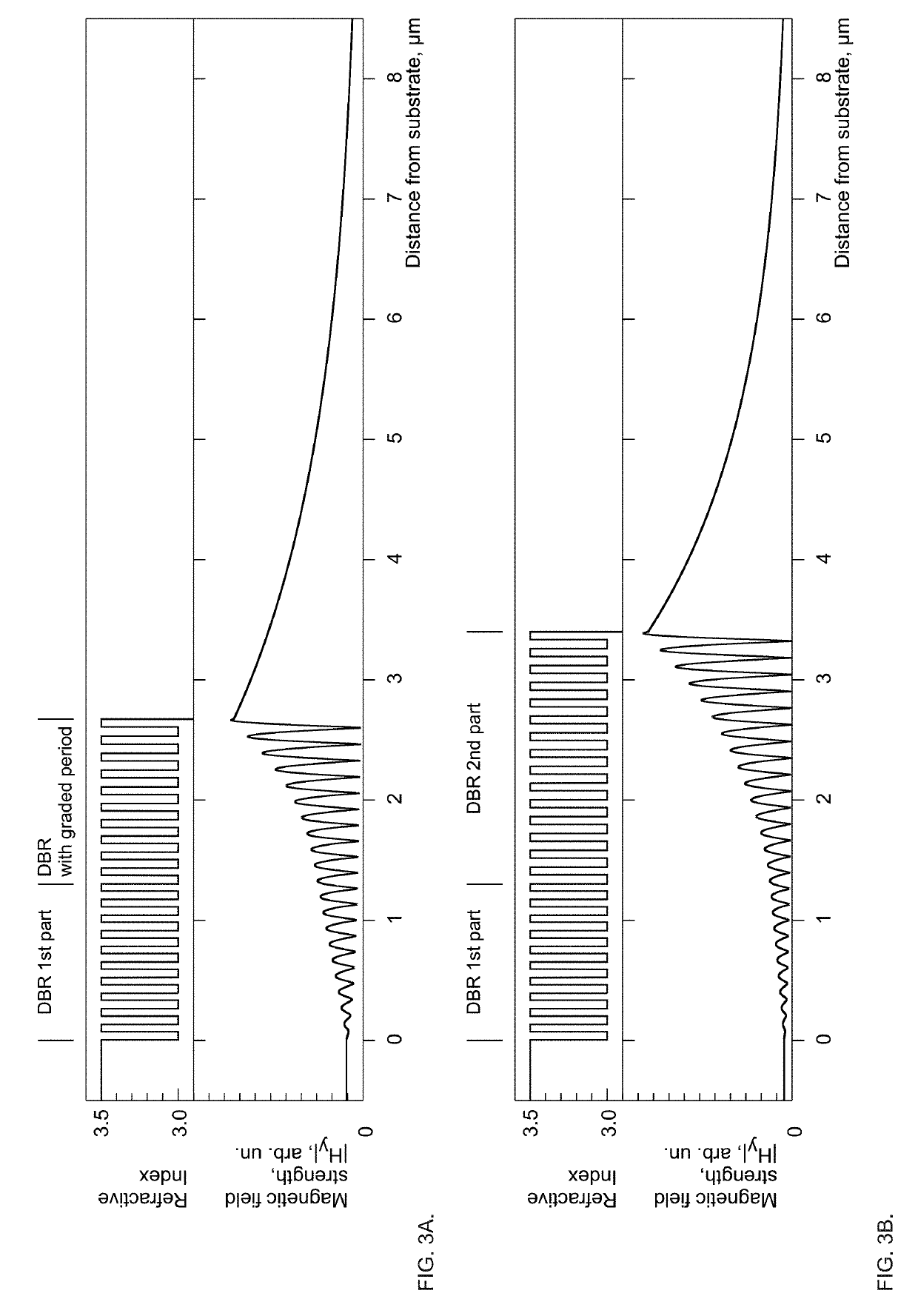Optoelectronic device based on a surface-trapped optical mode
a surface-trapped optical mode and optoelectronic technology, applied in the direction of laser optical resonator construction, laser details, semiconductor lasers, etc., can solve the problems of difficult to focus to a single spot of light coming out of the device, adversely affecting multiple applications like optical data transmission, and inability to efficiently couple to a single mode fiber
- Summary
- Abstract
- Description
- Claims
- Application Information
AI Technical Summary
Benefits of technology
Problems solved by technology
Method used
Image
Examples
Embodiment Construction
[0047]The present patent application employs the properties of a surface optical wave which can be formed at a boundary between a distributed Bragg reflector (DBR) and the air or at a boundary between a DBR and a thick dielectric layer. Such wave was disclosed in the recent publication by V. A. Shchukin, N. N. Ledentsov, V. P. Kalosha, N. Ledentsov Jr., M. Agustin, J.-R. Kropp, M. V. Maximov, F. I. Zubov, Yu. M. Shernyakov, A. S. Payusov, N. Yu. Gordeev, M. M. Kulagina, A. E. Zhukov, and A. Yu. Egorov, “Virtual cavity in distributed Bragg reflectors”, Optics Express, volume 26, issue 19, of Sep. 17, 2018, wherein this publication is hereby incorporated herein by reference, referred below to as Shchukin'18.
[0048]FIG. 2 illustrates a DBR formed of 25 periods of layers with alternating refractive indices n1=3.5 and n2=3.0, which are typical for Ga(1−x)Al(x)As alloy with a low and a high Al composition, respectively. The thicknesses of the layers equal d1=λ0 / (4n1) and d2=λ0 / (4n2), respe...
PUM
 Login to View More
Login to View More Abstract
Description
Claims
Application Information
 Login to View More
Login to View More - R&D
- Intellectual Property
- Life Sciences
- Materials
- Tech Scout
- Unparalleled Data Quality
- Higher Quality Content
- 60% Fewer Hallucinations
Browse by: Latest US Patents, China's latest patents, Technical Efficacy Thesaurus, Application Domain, Technology Topic, Popular Technical Reports.
© 2025 PatSnap. All rights reserved.Legal|Privacy policy|Modern Slavery Act Transparency Statement|Sitemap|About US| Contact US: help@patsnap.com



